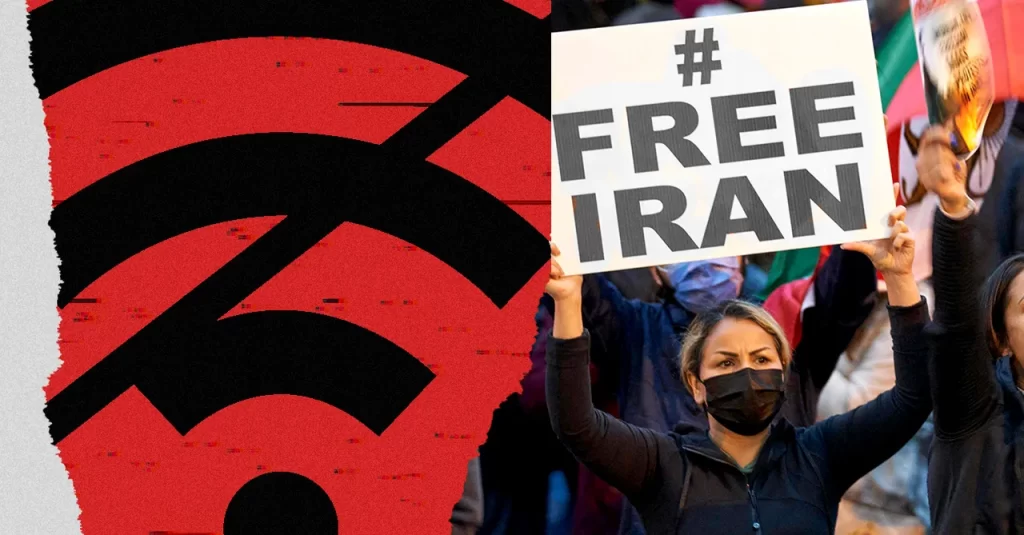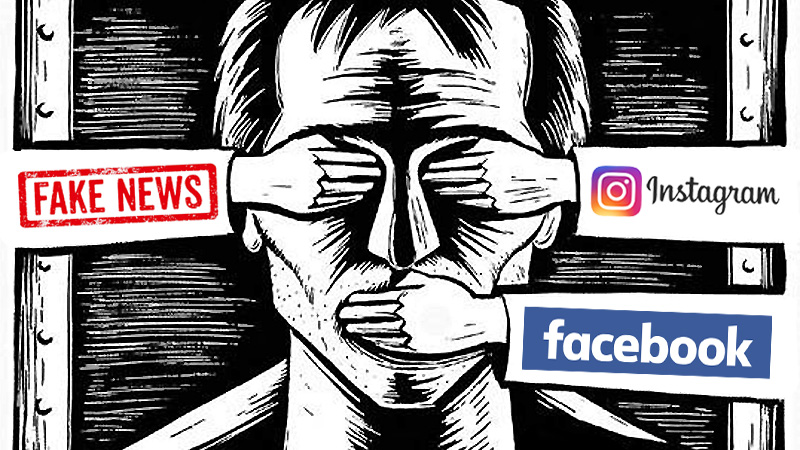Essay
Fighting for Information Freedom: The Struggle Against Censorship and Disinformation caused by the government of Iran
In recent years, social media platforms have become ubiquitous in our daily lives and an increasingly popular source of news and information. However, spreading fake news through these platforms has raised significant concerns about the impact of disinformation and misinformation on public discourse.
This essay examines the role of censorship and social media manipulation by the Iranian government as the primary cause of spreading disinformation and misinformation on social media platforms in Iran. Using Iran as a case study, it explores the impact of these tactics on political events and on the general public. The essay will begin by discussing the impact of the Islamic Republic of Iran’s censorship and the control of internet and social media on democracy, freedom, and access to information in the country. It will then delve into the use of social media manipulation and disinformation by the Iranian government and the role of social media influencers in spreading fake news.
Iran's Internet and Social Media Censorship: Undermining Democracy, Freedom, and Access to Information
Iran’s government systematically censors and controls information, undermining democracy and freedom. This control includes occasional internet shutdown, blocking social media, spreading fake news, and targeting independent journalists and protesters. As a result, Iranians have turned to VPN services, but censorship and regulation continue to impair freedom of content creation and internet access.
Iran has been in the grips of hard-line authoritarian governance for many years. As a result, its citizens face pervasive restrictions on their information access, as news outlets and social media platforms, such as Facebook and Twitter, are routinely blocked to repress any potential dissent (Frankel S., 2018). These restrictions are all part of an effort by the extremist regime to monopolize public discourse, thereby alienating its citizens from engaging with alternative opinions or views that oppose those held at the government level (Khalaji, 2022). Furthermore, journalists who strive for truth-telling are often met with unfair trials before revolutionary courts that sentence them harshly due to their work against the government (Reporters Without Borders, n.d.).
Censorship, control over information, and the spread of fake news in the media by the Islamic Republic Government in Iran extend beyond this context. In addition to broadcasting forced televised ‘confessions’ of dissidents, the Iranian regime has started to force individuals who publish anti-regime content on their social media accounts to post dictated statements on their profiles (Sinaee, 2023). This systematic abuse is contributing to an environment where democracy and freedom have become secondary concepts in favour of censorship, which threatens human rights and freedom of speech.
In 2011, Iran created a “cyber police” unit infamous for detaining and torturing bloggers. In addition, the Iranian government’s strict control over the internet and social media has made it difficult for social media content creators and independent journalists to accurately report on protests and on the regime’s violent crackdown (University of Exeter, 2022). During protests, the regime targets independent journalists, and protesters have been unable to voice their dissent, coordinate their activities, or share their experiences with the Islamic Republic Guard Corps (IRGC) and other regime forces due to internet blackouts (Demchuk, K, 2020). Also, in 2019, spreading fake news in social media about internal protests labelled as “separatist activities” was seen as an attempt by the regime to destroy evolving unity and solidarity among protestors (University of Exeter, 2022).
As a response, Iranians have increasingly turned to VPN services, which encrypt and redirect traffic to a remote server overseas, enabling them to reconnect to restricted websites and social media platforms (Browne, R, 2022). In Iran, landlines are tapped, and mobile data is severely restricted. In addition, all media are regularly monitored by a government hostile to political dissidents. Nevertheless, social media is a powerful tool for connecting with fellow citizens and discovering what is happening beyond the Islamic Republic’s state-controlled media (Azar, 2022). However, censorship and restrictive regulations have had far-reaching effects in obstructing this goal due to their impact on filtering published content and on internet access.

Iranian Government's Use of Social Media for Manipulation and Spreading Disinformation, and the Role of Influencers in Its Spread
The Islamic Republic of Iran leverages social media manipulation to spread disinformation and to maintain its survival (Azar, 2022). According to Lipschultz, social media content can be manipulated through public relations, advertising, and marketing, ranging from subtle persuasion to manipulative propaganda. In addition, the governmental use of social media for political communication has also led to the restriction of journalist’s professionalism and the creation of new and complex roles, challenging the trustworthiness of news (Lipschultz, 2022). Moreover, trolls manipulating public opinion using short videos, memes, and deep fakes that alter the facts can spread misinformation and disinformation about health and politics, resulting in long-term psychological effects (Lipschultz, 2022). This is similar to how the Islamic Republic of Iran controls social media platforms in the country to spread fake narratives.
Since foreign journalists may not be able to enter Iran safely to report on the protests, Western audiences and the diaspora abroad must rely on unverified social media posts, first-hand accounts and the monopolistic Islamic Republic of Iran Broadcasting (IRIB) (Azar, 2022). Misinformation about Iran’s political unrest is not limited to this story; some articles cite Iranian state-controlled media and spread fake narratives with unclear origins (Azar, 2022).
As an increasingly pervasive phenomenon, social media manipulation has profoundly impacted political discourse and journalistic credibility. Unfortunately, the Islamic Republic of Iran (IRI) is no stranger to this trend. In order to maintain its survival, the IRI utilizes social media manipulation to spread disinformation, which has significantly impacted political discourse and journalistic integrity (Azar, 2022; Lipschultz, 2022). Besides, the IRI’s control of social media platforms in Iran has made it difficult for foreign journalists to report on political protests, leaving Western audiences and the diaspora abroad to rely on unverified social media posts and Iranian state-controlled media (Azar, 2022).
Instances of fake social media accounts created by the Islamic Republic of Iran (IRI) to manipulate public opinion on social media discussions, especially Twitter, and spread the news in favour of its perspective are commonly known as “cyber-armies” (Doe, 2022). These cyber armies, often attributed to jailed critics of the Islamic Republic, use various strategies to manipulate social media and to silence dissidents (Kermani, 2023). According to Kermani, these strategies include the use of fake accounts, bots, and trolls. This manipulation can make it challenging for the general public to verify content, especially during chaotic situations on social media platforms where coordinated inauthentic activity is prohibited. The creation of fake accounts to promote certain narratives is a hallmark of disinformation and misinformation actors (Lawati & Ebrahim, 2022).
In this case, the harm comes when influential public figures, such as celebrities, influencers or educators, retweet the false narratives of the cyber-armies (Harff et al., 2022). With social media making it possible to provide and distribute news online rapidly and efficiently, a large amount of disinformation has been spread online, including fake news (Shu et al., 2017), which is intentional false information produced online for financial or political gain. Accordingly, influencers on social media platforms, such as Instagram, can spread misinformation and impact perceptions of news and information since they are trustworthy among their followers and are considered ordinary individuals (Harff et al., 2022).
Furthermore, fake news spreads widely through social media and can have grave consequences for individuals and society (Shu et al., 2017), especially for the younger generation (Harff et al., 2022). In addition, this generation is more likely to use social media as their primary source of news and information, making them more susceptible to misinformation and disinformation (Harff et al., 2022). Thus, since influencers can substantially influence the country’s younger generation due to their relatability factors, it is crucial to monitor and regulate the spread of false information online (Harff et al., 2022).
However, despite the manipulative tactics used by the IRI, Iranian users have demonstrated a keen ability to identify misleading hashtags and fake news, urging others not to be duped by the cyber army (Kermani, 2022). This fact demonstrates the power of public awareness and vigilance in combatting disinformation and misinformation on social media platforms.
Accordingly, addressing social media manipulation and disinformation is essential to ensure the integrity of political discourse, journalism, and public trust.

Conclusion:
As social media continues to grow in prevalence, it has become clear that fake news and disinformation are dramatically impacting public discourse. With this ever-growing presence of information on platforms like Facebook and Twitter, there is an increased need for individuals who create content to understand their responsibility. This is because they entered a unrestrained digital age of fake news with such intense political implications. As cited, the Iranian government’s internet censorship is a powerful illustration of the consequences that restricting access to information can have on democracy, freedom and knowledge. This political interference has had an extensive impact on public life and content publishing, effectively silencing independent journalists, content creators, and activists who wish to freely express their personal opinions and experiences regarding the IRI on social media.
Thus, to ensure democratic processes are protected, we must oppose such limiting operations focusing on both social media manipulation and disinformation circulation prevention, particularly encouraging influencers to be aware when fact-checking content they share while preventing false narratives from gaining traction with viewers.
Bibliography:
Azar, T. (2022, November 17). A false post on Iran’s protests went viral. social media can’t get it wrong again. The Guardian. Retrieved March 13, 2023, from https://www.theguardian.com/world/2022/nov/16/iran-protests-social-media-death-penalty
Browne, R. (2022, October 7). VPN use skyrockets in Iran as citizens navigate internet censorship under Tehran’s crackdown. CNBC. Retrieved March 13, 2023, from https://www.cnbc.com/2022/10/07/vpn-use-skyrockets-in-iran-as-citizens-navigate-internet-censorship.html
Demchuk, K. (2020, February 12). Iranian digital influence efforts: Guerrilla Broadcasting for the twenty-first century. Atlantic Council. Retrieved March 13, 2023, from https://www.atlanticcouncil.org/in-depth-research-reports/report/iranian-digital-influence-efforts-guerrilla-broadcasting-for-the-twenty-first-century/
Doe, J. (2022, December 24). Iran regime backers use fake Twitter account to support case against jailed actress. IranWire. Retrieved March 13, 2023, from https://iranwire.com/en/politics/111755-iran-regime-backers-use-fake-twitter-account-to-support-case-against-jailed-actress/
Frenkel, S. (2018, January 3). Iranian authorities block access to social media tools. The NewYork Times. Retrieved March 13, 2023, from https://www.nytimes.com/2018/01/02/technology/iran-protests-social-media.html
Harff, D., Bollen, C., & Schmuck, D. (2022). Responses to social media influencers’ misinformation about COVID-19: A pre-registered multiple-exposure experiment. Media Psychology, 25(6), 831–850. https://doi.org/10.1080/15213269.2022.2080711
Khalaji, M. (2022, October 6). Social Media in Iran’s protests: A new public sphere? The Washington Institute. Retrieved March 13, 2023, from https://www.washingtoninstitute.org/policy-analysis/social-media-irans-protests-new-public-sphere
Kermani, H. (2023). #MahsaAmini: Iranian twitter activism in times of computational propaganda. Social Movement Studies, 1–11. https://doi.org/10.1080/14742837.2023.2180354
Lawati, A. A., & Ebrahim, N. (2022, October 5). The battle of narratives on Iran is being fought on social media. CNN. Retrieved March 13, 2023, from https://www.cnn.com/2022/10/05/middleeast/social-media-disinformation-mime-intl/index.html
Lipschultz, J. (2022). Introduction to global political and social media communication. Social Media and Political Communication, 1–22. https://doi.org/10.4324/9781003170471-1
Reporters Without Boarders. (n.d.). Iran. Retrieved March 13, 2023, from https://rsf.org/en/country/iran
Shu, K., Wang, S., Tang, J., Zafarani, R., & Liu, H. (2017). User Identity Linkage across Online Social Networks. SIGKDD Explorations, 18(2), 5–17. https://doi.org/10.1145/3068777.3068781
Sinaee, M. (2023, February 24). Iran adopts a new tactic – ‘forced statements’ on social media. Iran International. Retrieved March 14, 2023, from https://www.iranintl.com/en/202302247578
University of Exeter. (2022, November 09). Home page news – Iranian regime “doubling down” on media manipulation in response to recent protests, analysis shows – University of Exeter. Retrieved March 13, 2023, fromhttps://www.exeter.ac.uk/news/homepage/title_943030_en.html

